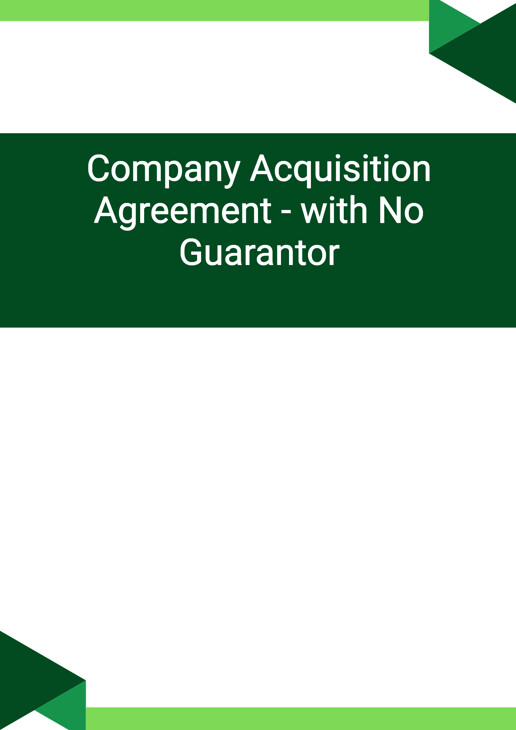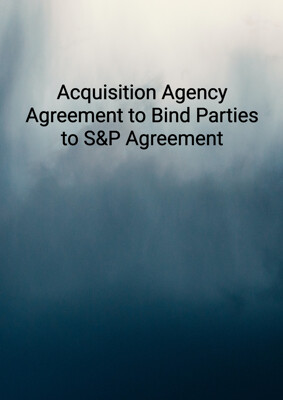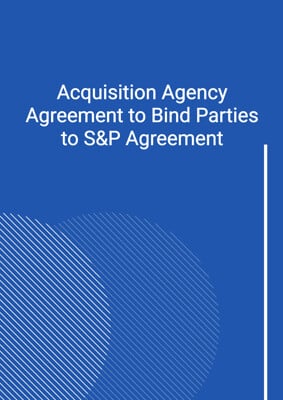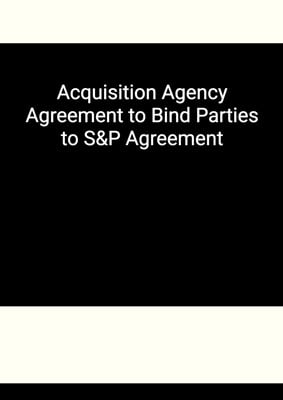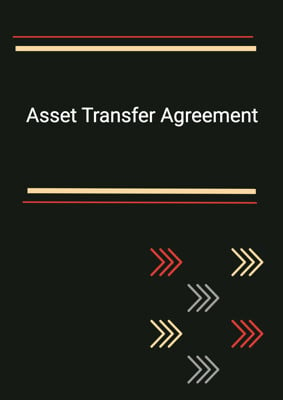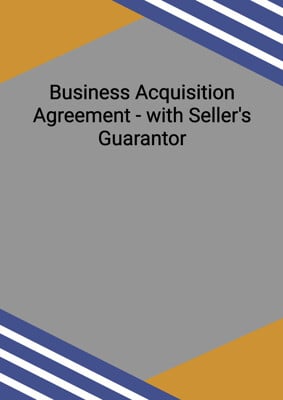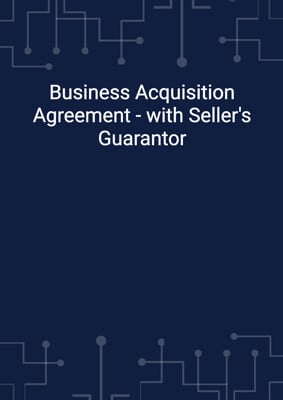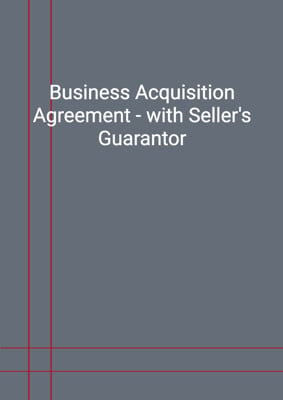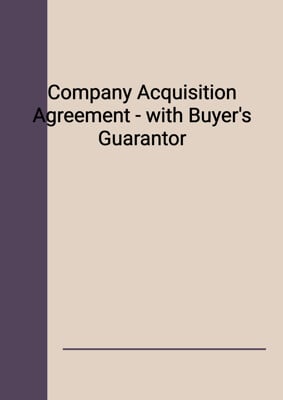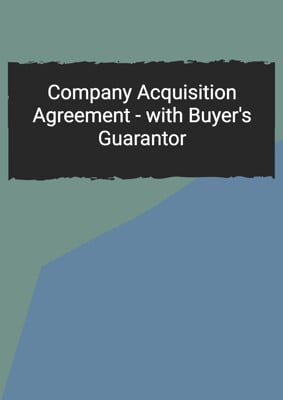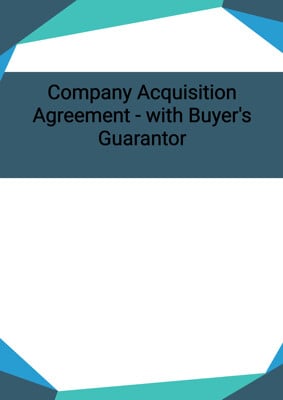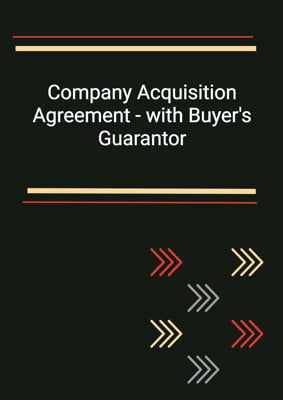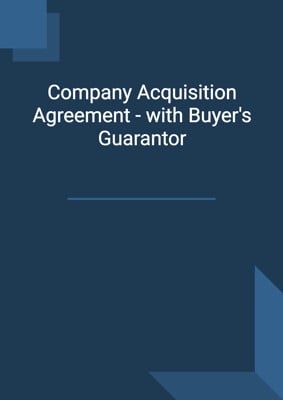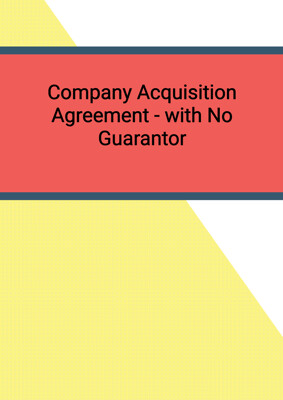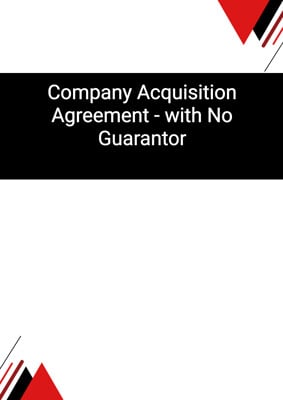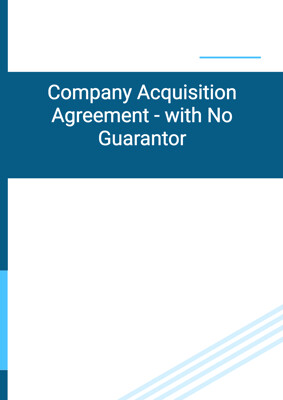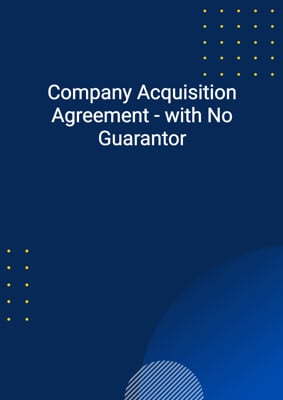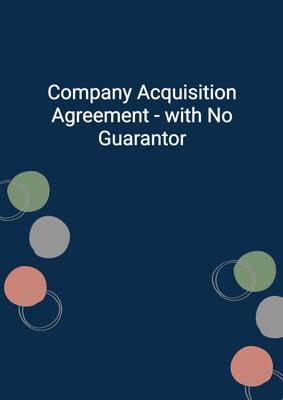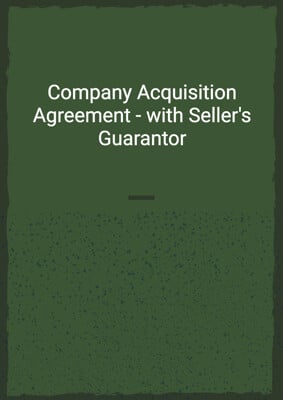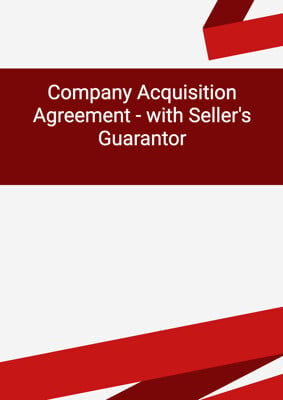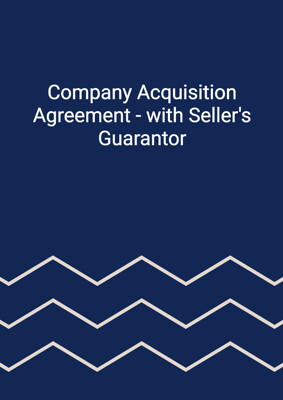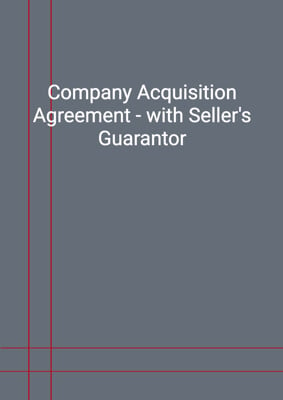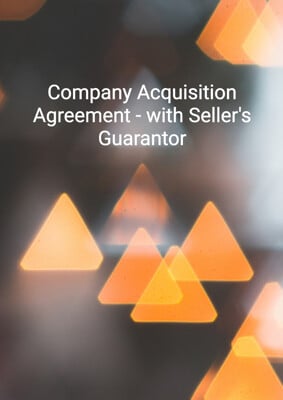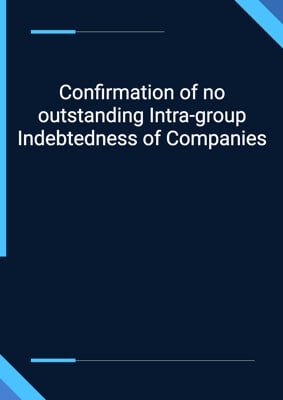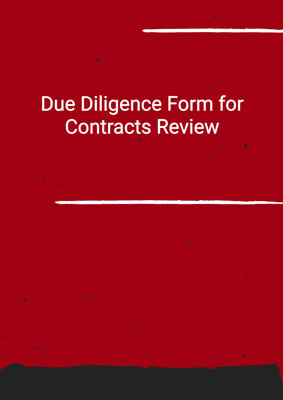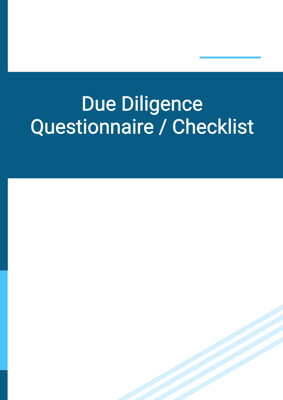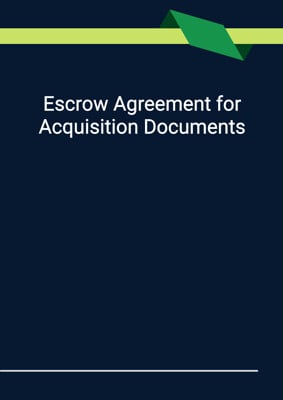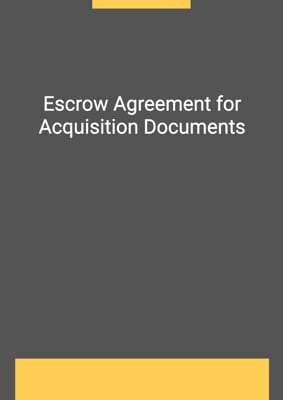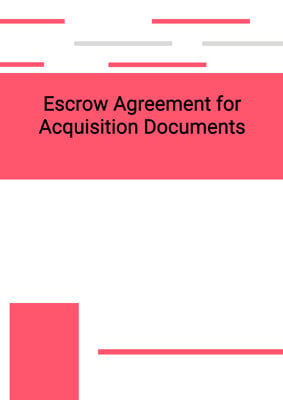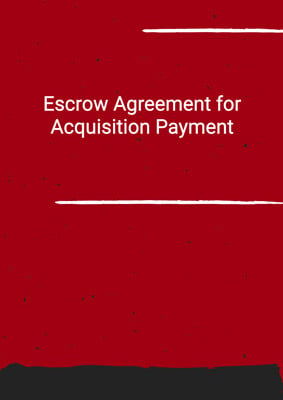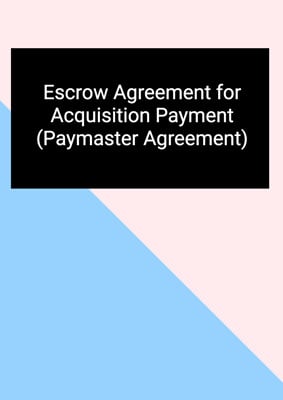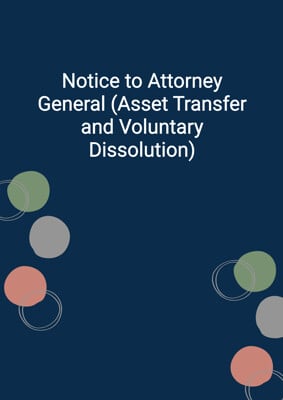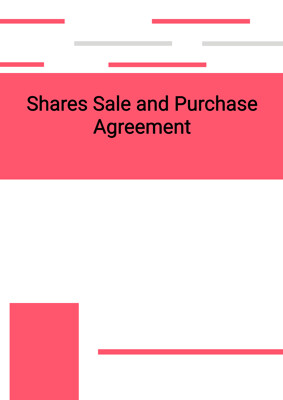How to Tailor the Document for Your Need?
01
Create Document
Fill in the details of the parties. You can click the "Fill with Member’s Information" button to complete it with information saved to your account.
02
Fill Information
Please fill in any additional information by following the step-by-step guide on the left hand side of the preview document and click the "Next" button.
03
Get Document
When you are done, click the "Get Document" button and you can download the document in Word or PDF format.
04
Review Document
Please get all parties to review the document carefully and make any final modifications to ensure that the details are correct before signing the document.
Document Preview
Document Description
The Company Acquisition Agreement - with No Guarantor is a legal document that outlines the terms and conditions of the acquisition of a company. The agreement is entered into between the sellers, who are the current owners of the company, and the buyer, who wishes to purchase the company. The document highlights the importance of the agreement in facilitating the transfer of ownership and ensuring that both parties are aware of their rights and obligations.
The entire document is divided into several sections, each addressing specific aspects of the acquisition. The first section provides an introduction and background information about the company and the sellers. It states that the sellers are the sole legal and beneficial owners of the share capital of the company and have agreed to sell all of the issued share capital to the buyer.
The second section of the document deals with the sale of the shares and the price. It specifies that each seller agrees to sell and the buyer agrees to purchase the number of shares set opposite the seller's name. The price payable by the buyer to the sellers for the shares is also determined based on the agreed terms.
The third section outlines the conditions to completion, which must be fulfilled before the sale and purchase of the shares can be completed. These conditions include the passing of resolutions by the shareholders of the sellers and the buyer approving the transactions, as well as the delivery of written consents and the repayment of any outstanding intra-group indebtedness.
The fourth section covers the pre-completion undertakings of the sellers. These include conducting the business in the ordinary and usual course, preserving and protecting the business assets, allowing the buyer's representatives access to the books and records, and making prompt disclosure of any relevant information.
The fifth section details the completion process, including the delivery of transfers and share certificates, the resignation of auditors and directors, and the payment of the purchase price. It also addresses the consequences of non-performance by any of the sellers and provides for the preparation of completion accounts if necessary.
The sixth section outlines the post-completion undertakings of the sellers, including the repayment of connected trading indebtedness, the change of name of any group company with a similar name, and the cessation of use or display of any trade or service marks.
The seventh section contains restrictions on the sellers, prohibiting them from carrying on or being engaged in any competing business and from soliciting or employing certain employees of the group company.
The eighth section includes warranties given by the sellers, which represent their representations and assurances about the company and its affairs. The sellers acknowledge that the buyer has relied on these warranties in entering into the agreement.
The ninth section sets out the limitations on claims, including time limits for making claims, maximum liability amounts, and exceptions for dishonest or deliberate misstatements.
The tenth section gives the buyer the right to terminate the agreement in certain circumstances, such as a material breach by the sellers or a breach of warranty that would have a material effect on the group.
The eleventh section addresses withholding tax and grossing up, specifying that each seller is responsible for paying all sums payable under the agreement free and clear of deductions or withholdings, unless required by law.
The twelfth section confirms that this agreement and the disclosure letter set out the entire agreement between the parties and supersedes any prior agreements or arrangements.
The thirteenth section allows for variations to the agreement, provided they are in writing and signed by all parties.
The fourteenth section deals with the assignment of rights under the agreement, allowing the buyer to assign its rights to other members of the buyer group or to banks or financial institutions as security.
The fifteenth section addresses announcements and disclosures, requiring the parties to obtain each other's approval before making any announcements or circulars related to the agreement.
The sixteenth section covers costs, stating that each party is responsible for its own costs incurred in connection with the agreement, except for stamp duty and other transfer taxes, which are borne by the buyer.
The seventeenth section includes a severability clause, stating that if any provision of the agreement is held to be invalid or unenforceable, it will be deemed not to be included in the agreement, but the remaining provisions will remain in full force and effect.
The eighteenth section clarifies that this agreement does not confer any rights on third parties.
The nineteenth section specifies that the agreement is governed by the laws of the relevant jurisdiction and any disputes will be subject to the jurisdiction of the courts in that jurisdiction.
The twentieth section addresses notices and service, stating that any notices under the agreement must be in writing and served by email, hand delivery, or post. It also provides for the addresses of the parties and the procedures for changing those addresses.
The twenty-first section covers waivers and the buyer's rights and remedies, stating that the buyer's rights and remedies under the agreement are cumulative and not affected by any failure or delay in exercising them.
The twenty-second section confirms that no rights are conferred on third parties under the agreement.
The twenty-third section addresses the governing law and jurisdiction of the agreement, stating that it is governed by the laws of the relevant jurisdiction and any disputes will be subject to the jurisdiction of the courts in that jurisdiction.
The twenty-fourth section deals with the pension scheme of the company, providing details of the scheme and any obligations or liabilities related to it.
The document also includes schedules that provide additional information, such as the details of the company and its subsidiaries, the maximum liability under warranties, the pension scheme, and the articles of association if applicable.
Overall, the Company Acquisition Agreement - with No Guarantor is a comprehensive legal document that covers all aspects of the acquisition process and ensures that both parties are aware of their rights and obligations.
How to use this document?
To use the Company Acquisition Agreement - with No Guarantor, follow these steps:
1. Review the agreement: Familiarize yourself with the terms and conditions of the agreement, including the sale of shares, price, conditions to completion, pre-completion undertakings, completion process, post-completion undertakings, warranties, limitations on claims, and other provisions.
2. Customize the agreement: Modify the agreement as necessary to reflect the specific details of the acquisition, such as the names and addresses of the parties, the number of shares being sold, the purchase price, and any additional terms or conditions.
3. Seek legal advice: Consult with a legal professional to ensure that the agreement complies with applicable laws and regulations and adequately protects your interests.
4. Negotiate and finalize the agreement: Discuss any proposed changes or amendments to the agreement with the other party and reach a mutually acceptable agreement. Once finalized, ensure that all parties sign the agreement.
5. Fulfill the conditions to completion: Work towards fulfilling the conditions specified in the agreement, such as obtaining shareholder approvals, delivering written consents, and repaying any outstanding intra-group indebtedness.
6. Complete the sale and purchase: On the agreed completion date, deliver the necessary transfers and share certificates, resign auditors and directors if required, and make the payment of the purchase price as specified in the agreement.
7. Post-completion obligations: After completion, fulfill any post-completion undertakings, such as repaying connected trading indebtedness, changing the name of any group company, and ceasing the use of any trade or service marks.
8. Monitor and enforce warranties: Keep track of any potential breaches of the warranties given by the sellers and take appropriate action to enforce your rights under the agreement.
9. Seek legal advice for disputes: If any disputes arise under the agreement, consult with a legal professional to understand your options and rights for resolving the dispute.
Note: This guidance is provided for informational purposes only and should not be considered legal advice. It is recommended to consult with a qualified legal professional for specific advice tailored to your situation.
Not the right document?
Don’t worry, we have thousands of documents for you to choose from:
